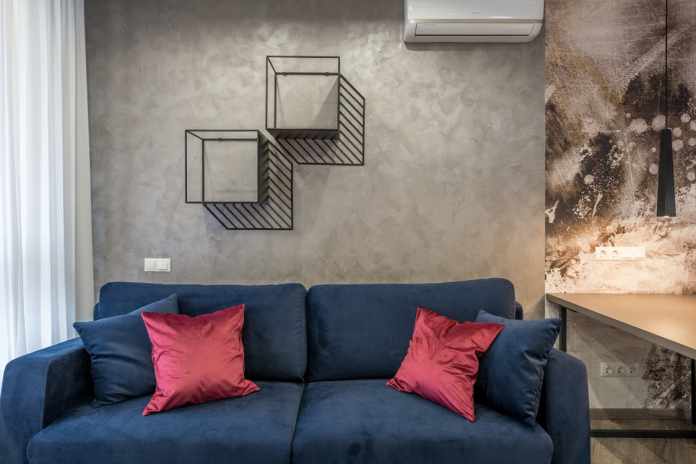Are you wondering about zoned air conditioning? Setting different temperatures in different areas of your house can be beneficial to lower utility bills and change the temperature according to individual preferences. Zoned air conditioning and Zoned Air Conditioners is necessary to divide homes and offices into specific areas with their own thermostat. Each thermostat is responsible for regulating the temperature in that designed area. In this way, it is possible to have different temperatures in different rooms.
Some of the advantages of this system are evident; some are less evident. Hurliman Heating is an excellent place to learn more about this topic as well.
Table of Contents
What are zoned air conditioners?
Zoned air conditioning is designed to treat each zone of the house differently. You can decide how to divide the zone. For example, you could determine that each room is a zone or two or more rooms are another zone.
If you have an open kitchen and a nearby living room, you could have that one zone or separate them into two zones, depending on the size of the two rooms. It is even more evident why zoned air conditioners are needed in the case of a two-story house or a huge home.
The system could be ideal for regulating the temperature to be even in each part of the house. For example, some house parts can be too hot because of direct contact with the sun or too cold, in case of lack of exposure to sunlight.
In general, hot hair rises, making the higher rooms warmer than the downstairs rooms. Such a system allows a homeowner to set the thermostat in each zone to compensate for temperature variations and keep the house evenly temperate.
What are the advantages of zoned air conditioners?
The benefits of zoned air conditioners are more evident in big or two-story homes, where you can experience a freezing bedroom while the kitchen is too hot (or vice versa). It is also an excellent system to solve family arguments on setting the thermostat.
Larger houses can have rooms that are rarely used. In that case, one can switch off the thermostat and use it only when needed.
Hare are some of the primary benefits:
- Better cooling for second-story rooms
- 2. Using less energy
- 3. Saving money on electric bills
- Customized cooling throughout the house
- 5. Easy installation
- 6. HVAC systems last longer
- 7. Better air quality
Installing zoned air conditioners is easier since they do not require colossal work. Often they do not need additional ductwork. In addition, since one can switch off the thermostat in the less used zones, it is possible to economize a lot on the utility bills.
With zoned air conditioners, each unit doesn’t have to work as much as a single unit since it doesn’t have to cool the entire house. This factor alone will prolong the HVAC system life and make a family economize a lot of money.
Last but not least, since this type of air conditioning doesn’t use ducts, it minimizes the accumulation and circulation of dirt, dust, mold, and pet dander. This is beneficial for people suffering from allergies or asthma.
How does zoned air conditioning works?
Zoned air conditioning works differently than systems using traditional ductwork. The setup is way more straightforward, and it doesn’t involve much work. In fact, a ductless system has air handles in each designed zone.
Each air handler attaches to the wall and is responsible for circulating air. They are connected with an outdoor heat pump using refrigerant lines that run through the walls. The system is completed with a thermostat attached to that unit.
It is also possible that a zoned air conditioning system uses existing ductwork. In this case, a professional contractor must design a ducted system with separated zones.
They usually install dampers in the ductwork, which are a vent that open and close to block the air or allow it through as needed.
What are the components of a zoned air conditioning system?
-
Indoor unit – The main system delivers the cool/warm airflow. It includes a heat exchange foil, fan, filter, and remote thermostat.
-
Outdoor unit – It is another small system connected with the indoor unit to pump refrigerant. It includes compression, fan, and heat exchange.
-
Vents – Each zone has a vent that delivers airs in the room, typically in the ceiling.
-
Control units – Each unit has a control system used to control the temperature.
-
Sensors – These are mechanisms to measure the temperature and send an instruction to the control units to regulate the temperature.
-
Dampers – These devices control the amount of airflow in a specific zone.
When do you need zoned air conditioning?
You should consider zoned air conditioning if you have a multi-level home. This is because the rooms upstairs can be warmer than the rest of the house. In addition, your family may not spend so much time on the top floor, so it could be needless to cool those rooms most of the day.
If you have a home with high ceilings, the heat can rise and stay at the top while the bottom of the room remains colder. With a zoned air conditioner system, you can resolve this problem by raising the room’s temperature often to make the air circulating and thus the room warmer (without influencing the rest of the house).
It is also good to create a separate zone for those rooms with high ceilings. If you have a home with large glass windows in certain rooms, zoned air conditioners could help regulate the temperature regardless if too much sunlight is hitting the window.
Conclusion
Zoned air conditioners are great for mastering your house temperature and completely controlling your consumption. However, if you already have a traditional system and wish to change it into a zoned system, you need a professional.
















